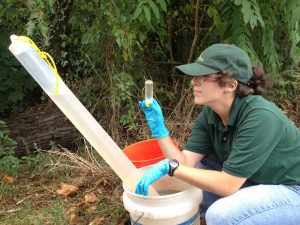Suspected MacArthur Airport Groundwater Contamination Islip, NY
Recent PFOA and PFOS Contaminant History
Poly- and Perfluoroalkyl substances (commonly referred to as PFOA’s and PFOS’s) were a hot-topic issue in 2017. On March 3, 2017, 6 NYCRR Part 597 was amended to prohibit release of PFOA/PFOS-containing substances unless expressly authorized by the New York State Department of Environmental Conservation (NYSDEC); historically, these compounds were major components of firefighting foams. Exposure to these compounds can have long-term negative health effects including developmental effects, cancer, and liver damage.
Local Water Quality Update
As of Tuesday, January 30th, 2018 the NYSDEC listed MacArthur Airport located in the Town of Islip, Suffolk County, NY as a possible candidate for the State’s Superfund list due to detection of perfluorooctane sulfonate (PFOS) in a well near the airport. The purported culprit was the past use and storage of firefighting foams onsite. Local sites that are already on the State Superfund list for PFOA/PFOS contamination include Gabreski Air National Guard Base and a fire-training academy in Westhampton Beach and Yaphank, respectively.
What Is the Superfund List?
The term “Superfund” is the common name for the federally established Comprehensive Environmental Response, Compensation and Liability Act (CERCLA) of 1980. The aim of Superfund is to initiate remediation at sites where hazardous waste was dumped, at the expense of the responsible party. NYSDEC administers the State’s version of Superfund, which addresses investigation and remediation at DEC listed inactive hazardous waste disposal sites with monies allocated under the 1986 Environmental Quality Bond Act.
PFOA and PFOS Regulatory Limits
PFOA/PFOS compounds are toxic at very low concentrations. In New York State, there is a standard referred to as maximum contaminant level, or MCL; if the contaminant is found to be above the MCL in a given public water system, action must be taken to reduce the level. With respect to MCL, PFOA’s and PFOS’s fall into the “unspecified organic contaminant”, whose limit is 50,000 parts per trillion (ppt). In stark contrast, the United States Environmental Protection Agency recommends that drinking water contain no more than 70 ppt of combined PFOA/PFOS compounds. However, the EPA recommendation of 70 ppt is merely a health advisory, which is not enforceable and non-regulatory.
Difficulties in Assessing PFOA/PFOS Levels in Water
One major concern when it comes to monitoring and assessing potential PFOA/PFOS concentrations in water is the difficulty in obtaining representative samples due to cross-contamination because the recommended exposure levels are so low; this was discussed in detail in a previous Walden blog. Clothing such as Tyvek suits or weatherproof treated (“Goretex”) gear, or items such as sunscreen, bug spray, or cosmetics can affect sampling results, and should not be worn while collecting samples. Additionally, any items containing fluoropolymers cannot be used. QA/QC samples from an approved laboratory must be reviewed to rule out possible PFOA/PFOS cross-contamination sources.
Talk to An Expert
Walden has a team of experienced geologists and engineers that can help you with PFOA/PFOS sampling, regulations, health concerns, storage, and more. Check out our Environmental Consulting Page to learn more about Walden’s range of suspected contamination services from sampling to remedial system design. Please contact us at (516) 624-7200 to learn more!


